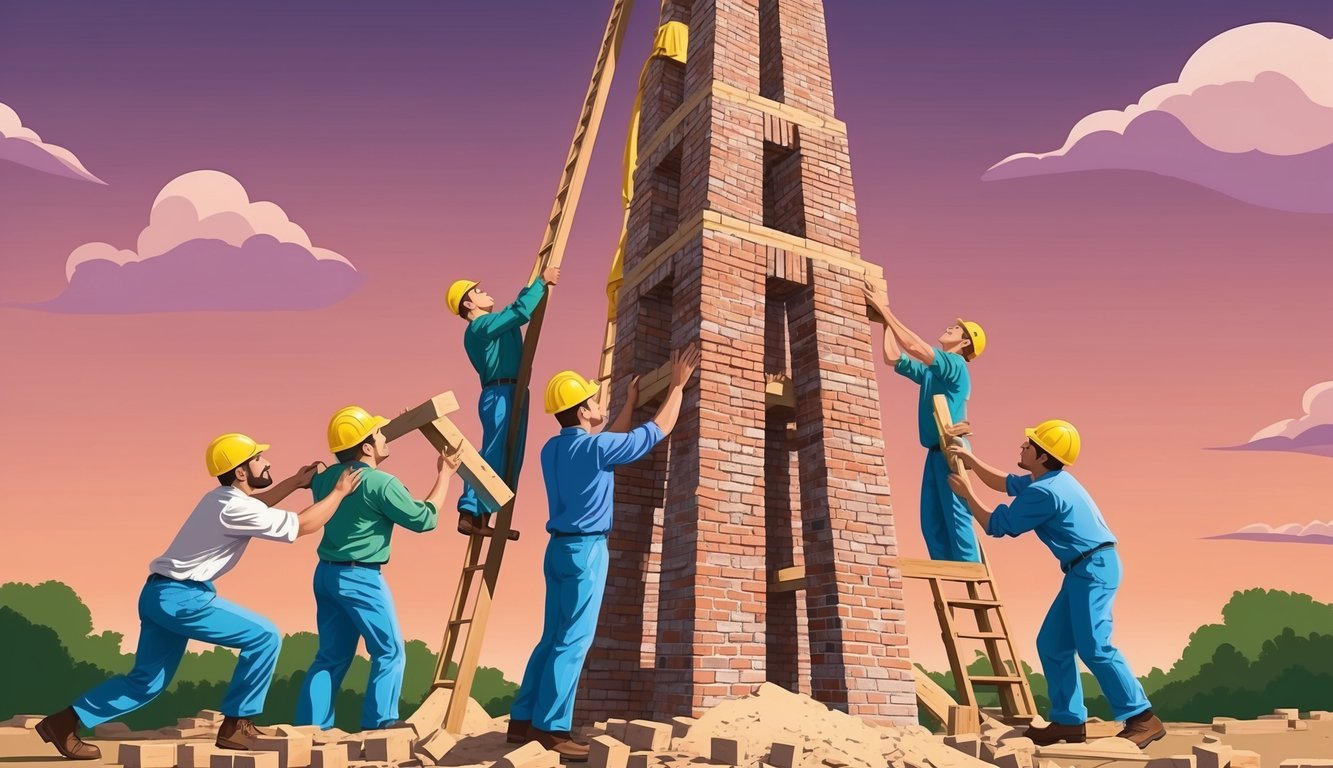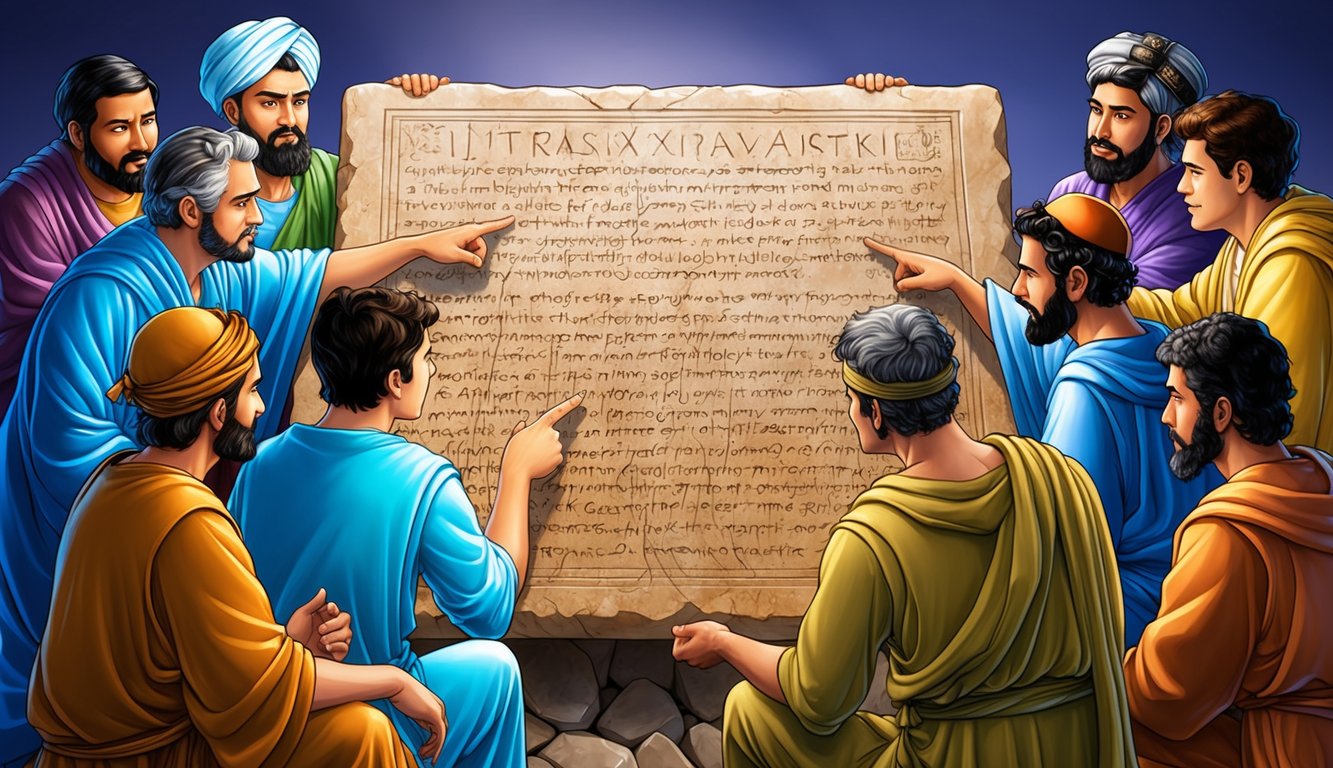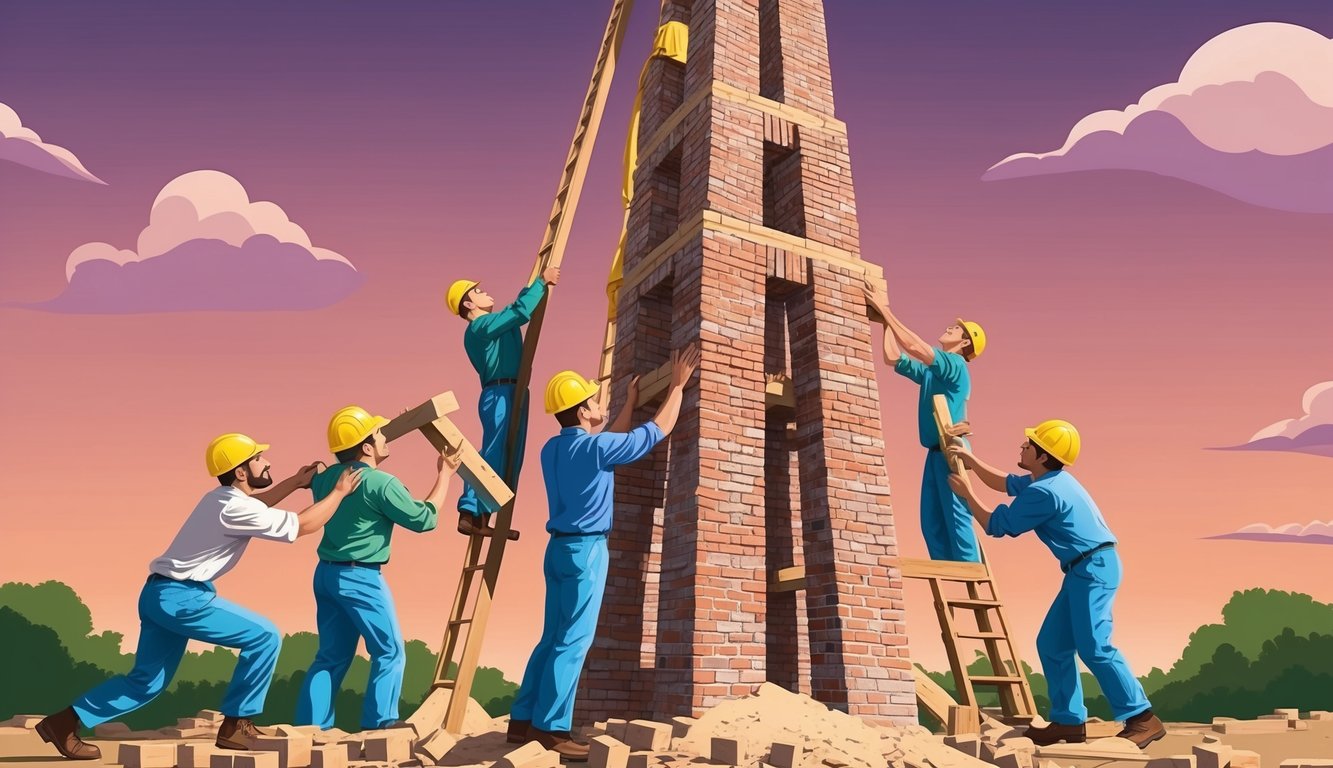Don’t Miss Out On This Unique Astrological Opportunity
Are you tired of spinning your wheels and getting nowhere? Simply put, you’re out of sync: you’re out of alignment with your astral configuration.
But: there’s a kind of map that can help you reclaim your alignment. Think of it as your own personal blueprint to success and happiness: a blueprint that will help you live your most amazing life.
Get started here.
Genesis 11:3 gives insight into a significant event in the Bible known as the Tower of Babel.
In this verse, people unite to make bricks and build a great tower to reach the heavens. This story reflects their desire for power and unity, but it also shows the potential dangers of pride and ambition without humility.

The construction of the Tower represents not just a physical act but also a deep cultural and linguistic shift.
As they relied on bricks instead of stones, it illustrates how human innovation can be both creative and rebellious against divine intentions.
Understanding this story can unlock valuable lessons about community, communication, and our relationship with God.
As you dive deeper into the context and implications of Genesis 11:3, you’ll discover what this ancient narrative teaches us about human nature and faith.
It serves as a reminder that unity and ambition should be aligned with God’s purpose, guiding you in how you pursue your goals.
Key Takeaways
- The Tower of Babel story illustrates the dangers of pride and ambition.
- The choice to use bricks shows human innovation and its consequences.
- Understanding this verse can help deepen your relationship with God.
Historical Context and Setting
The events surrounding Genesis 11:3 take place in a significant time and location.
Understanding the historical context reveals how early civilizations formed and interacted after the Flood.
This sets the stage for the story of the Tower of Babel and the expansion of humanity.
The Plain of Shinar and Babylon’s Rise
The Plain of Shinar is located in ancient Mesopotamia, which includes parts of modern-day Iraq.
After the Flood, people began to gather in this region.
They sought to build a city and a tower to reach the heavens.
This desire was notable as it reflected humanity’s ambition and unity.
The city they began to construct was Babylon, a name that would become synonymous with power and empire.
Babylon later grew into a major city in history, home to many influential empires.
Post-Flood Civilization and Human Dispersal
After the Flood, the descendants of Shem, Ham, and Japheth spread across the Earth.
They established various communities and civilizations, each with distinct cultures and languages.
The people in Shinar came together, thinking they could make a name for themselves.
They aimed to avoid the fate of being scattered.
This ambition was a key point in God’s plan for humanity.
Instead of merging into one society, He wanted a diversity of people across the Earth.
The events of Genesis 11 highlight the tension between human ambition and divine intention.
The Construction of the Tower
The construction of the Tower of Babel involved innovative building materials and techniques.
The people of Babel creatively adapted to their environment to achieve their grand vision.
Building Materials: Brick and Mortar
The main material used for the Tower was brick, which replaced traditional stone.
Since the land of Shinar lacked good quality stone, the builders decided to make sun-dried bricks.
These bricks were made by mixing clay with water, forming them into shapes, and letting them bake under the sun.
Instead of using regular mortar, they cemented the bricks with a substance called bitumen.
This natural asphalt acted like a glue, making the structure more durable.
It was both liquid and glutinous, allowing for strong bond formation between bricks.
This choice of materials was essential for creating sturdy walls and ensuring the tower’s height.
Techniques: From Bricks to Buildings
Building such a massive structure required smart techniques.
Once they created the bricks, they used a kiln to harden them.
This process transformed the soft clay into a robust building material.
The construction involved stacking layers of bricks to form walls.
They built the city alongside the tower, carefully positioning buildings to support the overall design.
The mixture of bitumen as mortar helped keep the walls intact, weathering the elements better compared to simpler methods.
The results were impressive, leading to the Walls of Babylon that were tall and strong, showcasing their architectural ingenuity.
Cultural and Linguistic Shift
The story in Genesis 11 reveals a significant change in human communication and cultural dynamics.
This shift from unity to diversity highlights how language shapes our societies and interactions.
Unity to Confusion: The Diversity of Human Language
In the beginning, everyone spoke a single language, making it easy to connect and collaborate.
This common speech allowed people to work together on large projects, like the Tower of Babel.
When the people sought to make a name for themselves by building a tower to the heavens (Genesis 11:4), their ambition led to divine intervention.
God confused their language, splitting the united community into groups that could no longer understand each other.
This marked the start of a wide range of languages.
As a result, communication became complex.
Misunderstandings and cultural barriers arose, changing how people interacted.
The beauty of diverse languages emerged, but so did challenges that come with differing ways of speaking.
Babel’s Legacy: Impact on Language and Culture
The Tower of Babel serves as a powerful reminder of how language shapes culture.
Each language carries unique ways of thinking and expressing ideas.
When God confused the tongues, it was not just a linguistic shift but a cultural one too.
Different groups developed their own identities tied to their language.
These identities influence art, traditions, and values, enriching human experience.
For example, some cultures emphasize storytelling, while others focus on direct communication.
Moreover, the confusion of tongues has inspired countless efforts to bridge language gaps.
Translation services and language learning today reflect the ongoing journey towards understanding one another.
The legacy of Babel reminds us that while we may talk differently, our shared humanity connects us all.
Theological Implications
Genesis 11:3 offers deep insights into human nature and divine authority.
It explores themes of ambition and the dangers that arise from trying to elevate ourselves above God.
As you reflect on this passage, consider the weight of human ambition and the risks of idolatry.
Human Ambition vs. Divine Will
In Genesis 11, the people at Babel sought to make a name for themselves by building a tower.
Their desire was to reach the heavens, showing a drive for greatness that conflicts with divine authority.
This ambition reflects a common human tendency: wanting to be in control and admired.
The Lord sees their plan and intervenes.
This reminds us that our ambitions should align with God’s will, not override it.
The Bible Commentary often points out how the builders disregarded God’s design, striving instead for self-glorification.
This serves as a warning.
When you prioritize personal goals over God’s purpose, you risk losing sight of what truly matters.
The avoidance of humility often leads to spiritual pitfalls.
Lessons from Babel: Idolatry and Hubris
The story of Babel highlights the dangers of idolatry and human pride.
The people used Babylonian pitch (bitumen) to create bricks, showing their cooperation and innovation.
Yet, they misused these gifts in defiance of the Lord’s plan.
Building the tower became an act of hubris, acting as if they could rival God.
The King James Version and other translations emphasize how their unity, while powerful, was directed toward a sinful goal.
The NIV, ESV, NASB, NLT, and CSB all portray the consequences of such actions effectively.
This event teaches us the importance of humility.
When you elevate yourself, you risk falling further.
Reflect on how you can use your talents not for personal gain, but to fulfill God’s calling in your life.
Literary and Archaeological References

When exploring Genesis 11:3, it’s helpful to look at historical accounts and archaeological findings.
These references shed light on the Tower of Babel and its significance in ancient civilizations.
Historians and the Tower: Herodotus and Diodorus Siculus
Herodotus, known as the “Father of History,” wrote about Babylon in the 5th century BC.
He described a massive ziggurat dedicated to the god Marduk.
This pyramid-like structure may relate to the Tower of Babel described in the Bible.
Diodorus Siculus, a Greek historian, echoed similar views in the 1st century BC.
He noted that the Babylonians built temples reaching great heights.
His writings reinforce the idea of monumental structures aimed at heaven, linking to the biblical narrative.
These sources offer a blend of history and mythology surrounding Babel.
Modern Day Location and Excavations: Birs-Nimroud
The site of Birs-Nimroud is located near the Euphrates River.
It’s believed to be the ancient location of Babylon, where the Tower of Babel may have stood.
Archaeological excavations reveal the remains of a large ziggurat that aligns with descriptions from biblical texts.
Dating back to around 600 BC, the structure was constructed with bricks and mud.
Excavations have uncovered numerous artifacts that hint at the area’s significance in the ancient world.
Travelers visiting today can see the remnants of this impressive site, which sparks the imagination regarding the stories of Babel, Lot, and the early inhabitants of the region.
Frequently Asked Questions

The story of the Tower of Babel raises many interesting questions.
Here are some of the most common inquiries and their answers.
What is the significance of the ‘slime’ mentioned in the story of the Tower of Babel?
The term ‘slime’ in Genesis 11:3 refers to a type of tar or pitch used as a strong adhesive.
It signifies human ingenuity in using available resources to achieve their goals.
This choice shows their determination to build a lasting structure despite the challenges presented by their environment.
Can you explain the meaning of the phrase ‘Let us make brick, and burn them thoroughly’ in the context of Genesis 11:3?
This phrase emphasizes the effort and cooperation among the people in creating a strong building material.
Making bricks involved shaping and hardening clay in a furnace, which was an advanced technique for the time.
It highlights their ambition and desire to create something great together.
What was the purpose behind the building of the tower in Genesis chapter 11?
The people built the tower to make a name for themselves and to prevent being scattered across the earth.
They wanted to create a city that would signify their unity and strength.
This reflects their desire for power and fame rather than fulfilling God’s command to spread across the earth.
How does the confusion of languages at Babel relate to the broader themes in the Book of Genesis?
The confusion of languages serves as a turning point in human history.
It shows the consequences of pride and disobedience against God.
This event relates to Genesis’s themes of human rebellion and God’s sovereignty over creation, as He intervened to limit their ambitions.
What lessons can be derived from the account of the Tower of Babel in Genesis 11:3-4?
This account teaches the importance of humility and obedience to God.
It serves as a warning against seeking personal glory over divine purpose.
You can learn that unity without God’s guidance can lead to confusion and division.
By reflecting on this lesson, we are reminded that true success comes from aligning our actions with God’s will.
The story emphasizes that human efforts, no matter how ambitious, cannot thrive without His blessing.
For further insights, exploring bible verses about unity can provide wisdom on maintaining harmony through faith and obedience.
How is the passage of Genesis 11:3 translated in different versions of the Bible, and what are the implications?
Different Bible translations may vary in their wording, but the core message remains consistent.
Some versions might use “bitumen” instead of “slime,” which can reflect slight differences in interpretation.
These translations impact how readers understand the resourcefulness of the builders but keep the overall lesson intact.



